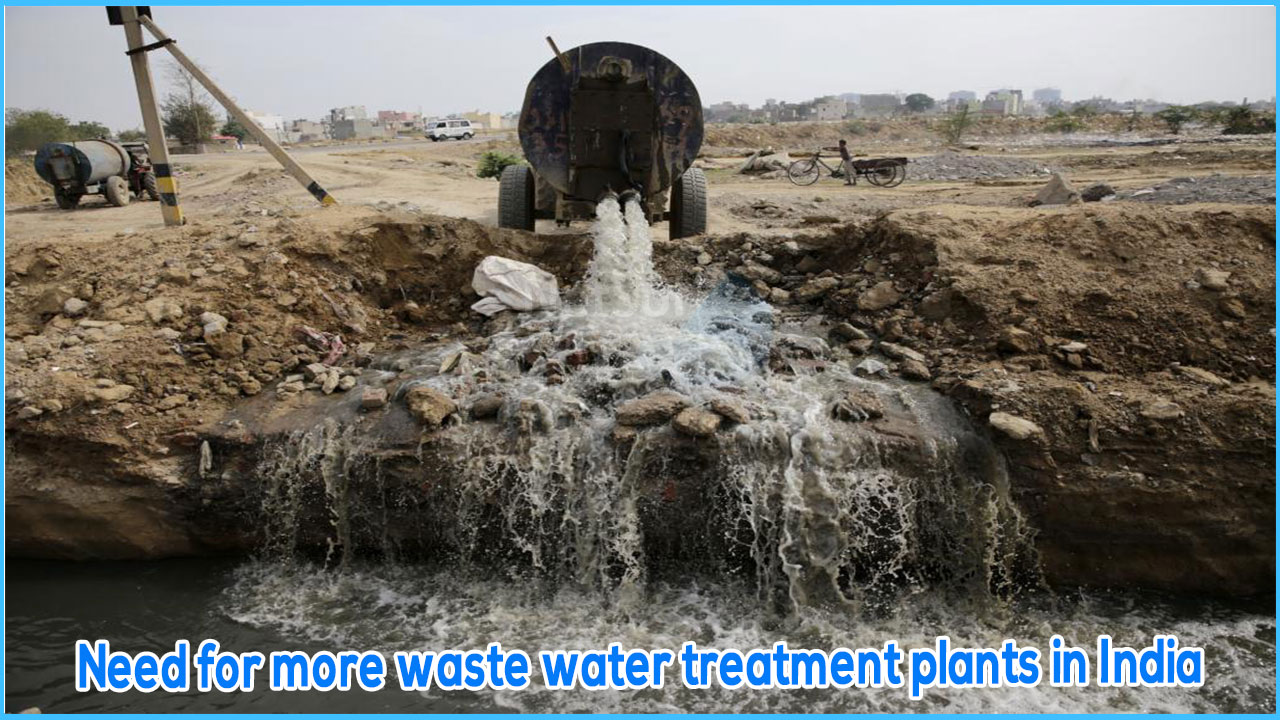WHAT IS WASTE WATER?
Wastewater is water that has been contaminated by domestic, industrial, or commercial use. As a result, the composition of all wastewaters is constantly changing and highly variable, making a single definition of the term itself difficult to pinpoint.Water makes up 99.9% of wastewater, with the remaining 0.1% removed. This 0.1% is made up of organic matter, microorganisms, and inorganic compounds. Effluents from wastewater are discharged into a variety of environments, including lakes, ponds, streams, rivers, estuaries, and oceans. Because harmful substances wash off roads, parking lots, and rooftops, storm runoff is included in wastewater.
EFFECTS OF RISING WASTE WATER LEVELS-
- 1. There is a lack of safe drinking water and basic necessities.
- 2. The presence of hazardous toxic chemicals like lead and mercury, which can cause chronic health issues in living organisms.
- 3. Soil contamination.
- 4. Groundwater and other natural water sources are contaminated.
NETSOL WASTEWATER TREATMENT IS ONLY BEST SOLUTION TO TACKLE WATER CRISIS. NETSOL PROVIDES ADVANCED METHODS TO TREAT WASTE WATER SUCH AS:
- 1. PHYSICO-CHEMICAL TREATMENT: Depending on the size and characteristics of the pollutant, different treatment methods are used. Because small particles are typically difficult to separate, physicochemical treatment is used to treat them.
- 2. BIOLOGICAL TREATMENT:The use of organisms to treat pollutants is part of this treatment process. There are several aerobic and anaerobic wastewater treatment methods available.
- 3. ZERO-LIQUID DISCHARGE:This is cutting-edge wastewater treatment technology. To purify water, Reverse Osmosis and other membrane-based technologies are used. It aids in the removal of dissolved solids, yielding distilled water.
Introducing these methods can aid in the recycling of wastewater and the affordability of clean water for reuse.
SEVERAL AREAS WHERE WASTE WATER MANAGEMENT IN THE NEED OF THE HOUR:
1· Industrial Sector
2· Municipal Water Treatment in towns and cities.
3· Rural Areas for using the treated water in irrigation
CHALLENGES TO OVERCOME IN ORDER TO CONTROL THE SCARY WATER SITUATION IN INDIA, SUCH AS:
- 1. There is an imbalance between the amount of wastewater produced and the number of treatment plants available to treat it.
- 2. Public apathy and a lack of awareness
- 3. There is a lack of effective national awareness campaigns.
- 4. In wastewater treatment, there is a lack of public-private collaboration.
WHY IS THERE A NEED FOR MORE WASTE WATER TREATMENT PLANTS IN INDIA?
As India progresses towards becoming a developed nation, it is constantly confronted with the issue of a deteriorating environment. The rapid expansion of industry has increased the number of pollutants in our atmosphere. Wastewater is one of these pollutants. As a result, wastewater treatment through wastewater treatment plants has become an important task. With an increase in both population and industrial infrastructure in India, the volume of wastewater is increasing at an alarming rate. This is exacerbated by the depletion of freshwater resources such as groundwater, rivers, wells, and so on.
Water is one of the most essential resources for survival. As a result, treating this situation with less than utmost seriousness may land us in hot water. Nature has the ability to treat naturally occurring contaminants such as human and animal waste. However, in today's world, the production of massive amounts of wastewater cannot be managed solely by nature.




